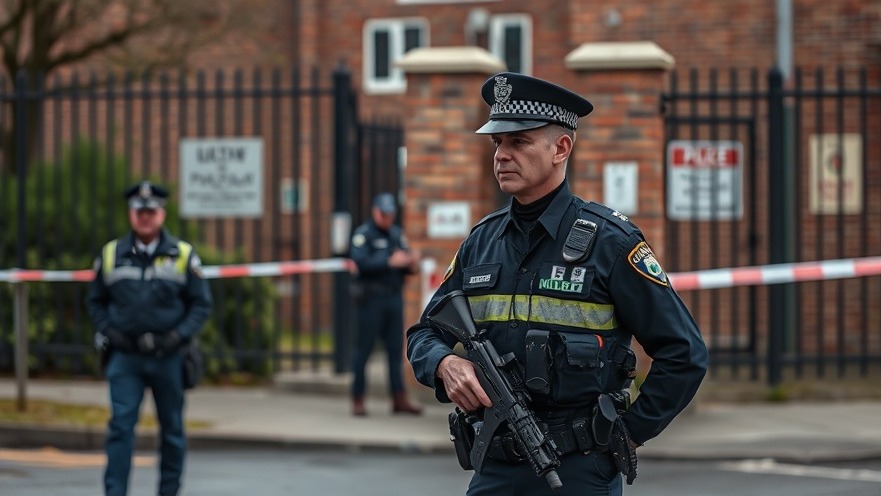
Texas Police Officer Injured Near Immigration Detention Center: A Rising Tide of Violence
In a shocking incident reported early July 6, 2025, a police officer from Alvarado, Texas, was shot while responding to a call regarding a suspicious person near the Prairieland Detention Facility. This tragic event underscores a troubling trend where law enforcement and immigration facilities are becoming increasingly intertwined in the fabric of national discourse surrounding immigration policies.
The Context Behind the Incident
The shooting incident occurred amidst heightened tensions related to immigration enforcement in the United States. Following the Trump administration’s commitment to a strict “zero tolerance” policy, clashes between law enforcement and individuals opposed to such policies have intensified. The area surrounding immigration detention centers has increasingly become a point of contention, manifesting in protests and a visible police presence—a combination that heightens risks for law enforcement officers on duty.
The Implications of Immigration Policies on Public Safety
This shooting not only raises concerns about the safety of police officers operating in these volatile environments but also reflects broader societal arguments regarding immigration enforcement. As the debate around immigration evolves, we must examine how policies such as “zero tolerance” impact not just undocumented immigrants but also the communities and officials responsible for enforcing these laws. Critics argue that such policies contribute to an atmosphere of hostility that endangers both immigrants and law enforcement agents.
Historical Context: Immigration Enforcement and Law Enforcement Coordination
Historically, the enforcement of immigration laws has oscillated between leniency and strictness, depending on the administration in power. Under President Trump, a marked shift towards aggressive enforcement led to increased collaboration between federal enforcement agencies like ICE and local police departments. This partnership, while aimed at intensifying immigration enforcement, has also complicated relationships with communities that fear increased policing may lead to racial profiling and civil rights violations.
A Closer Look at the Zero Tolerance Policy
Since the inception of the zero tolerance policy, numerous reports have surfaced highlighting the human costs associated with its enforcement, including family separations and increased detention rates among vulnerable populations. These statistics reflect a growing discontent among communities and advocacy groups, who argue that such a strict approach is not only inhumane but also counterproductive to fostering trust between law enforcement agencies and the communities they serve.
Impact on Public Sentiment
Reactions from local communities, law enforcement agencies, and civil rights groups signal a dichotomy in public sentiment. While some support stringent immigration tactics to ensure security, others vehemently oppose these actions, calling for reform in how immigration policies are enforced. This divide illustrates that the implications of these political decisions extend beyond the enforcement of immigration laws, affecting community relations at the grassroots level.
Future Implications
Looking ahead, the challenges associated with enforcing immigration policies like the zero tolerance directive will likely persist. With ongoing debates about immigration reform in Congress and fluctuating public opinions, the potential for further incidents of violence, protests, or clashes between communities and law enforcement remains high. How policymakers respond to these challenges could either exacerbate or help mitigate the tensions that exist.
The incident of the Texas officer is a somber reminder of these complex dynamics. It serves as a stark illustration of how governance, law enforcement, and public safety intersect within the broader narrative of immigration policies in America. As discussions about immigration reform continue, the importance of fostering dialogue and collaboration between diverse community voices remains clear.
Understanding the Community's Perspective
In the discussions that follow these incidents, it is paramount for all parties involved—law enforcement, community leaders, and policymakers—to engage with empathy and understanding. Recognizing the fears and concerns from all sides can pave the way for meaningful reform that addresses public safety concerns without compromising the basic rights and dignity of individuals impacted by these policies.
As this story unfolds, staying informed on how events like these shape national conversations around immigration will be key. Engage with trusted news sources and participate in community discussions to remain active in shaping a future that prioritizes safety, dignity, and justice for all.
 Add Element
Add Element  Add Row
Add Row 



Write A Comment